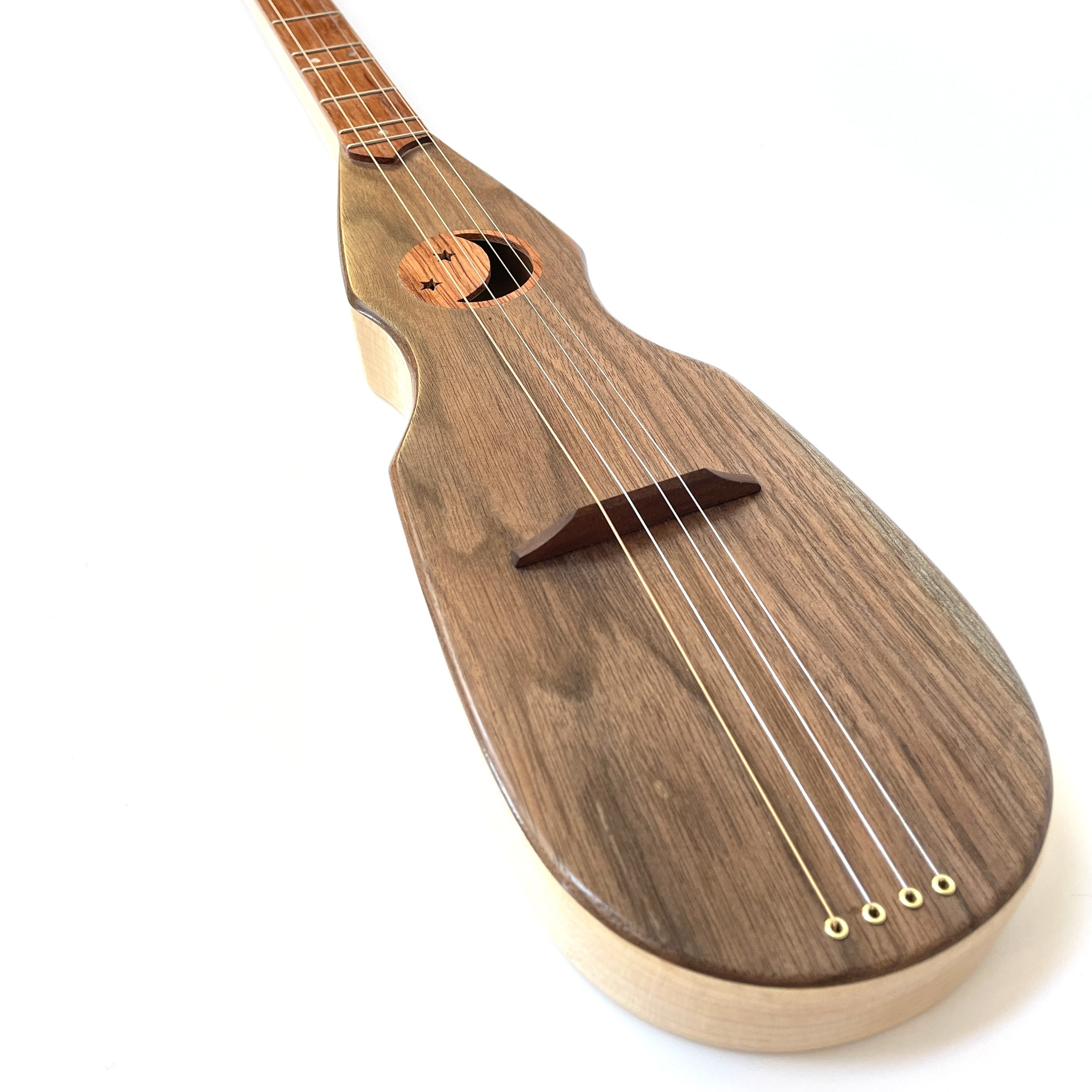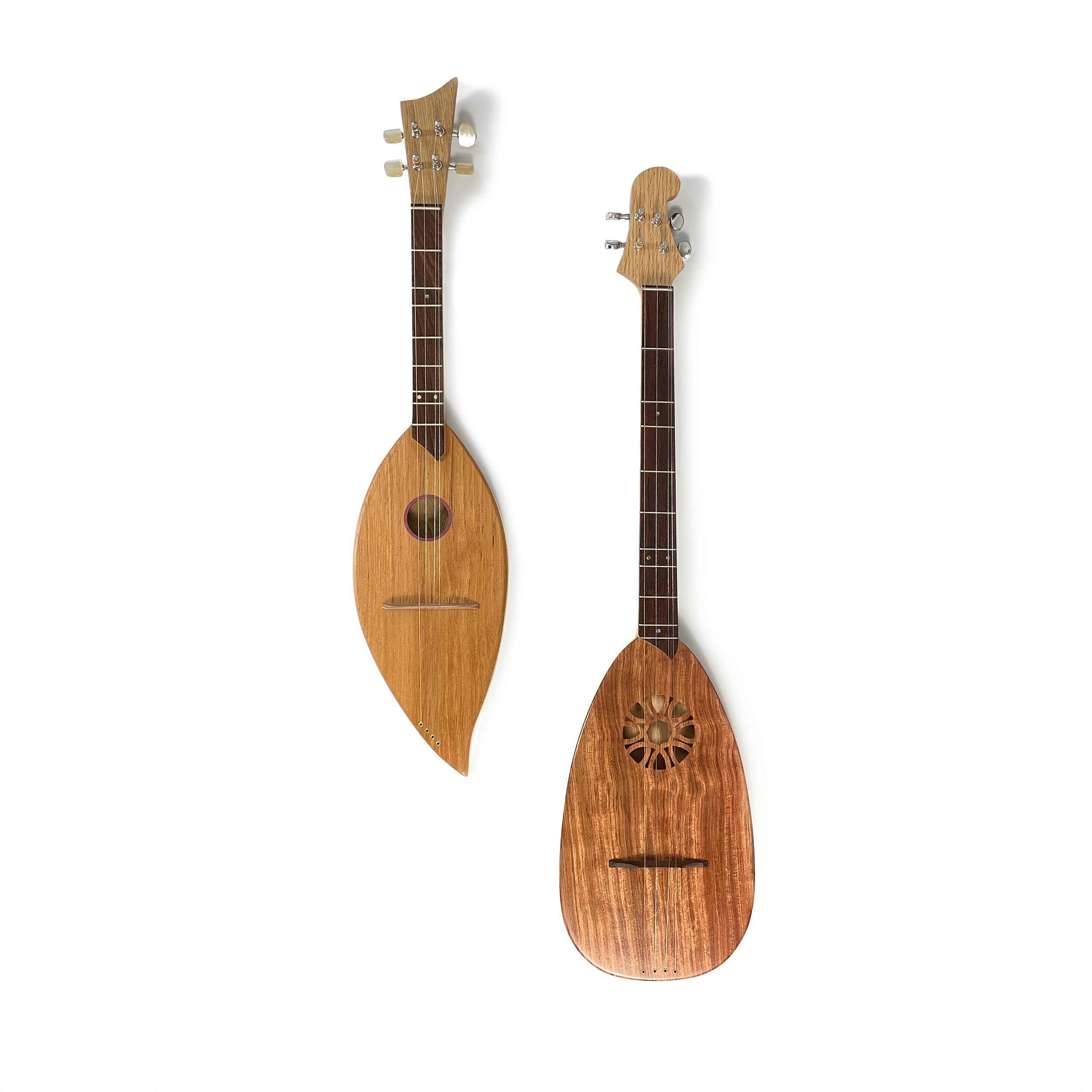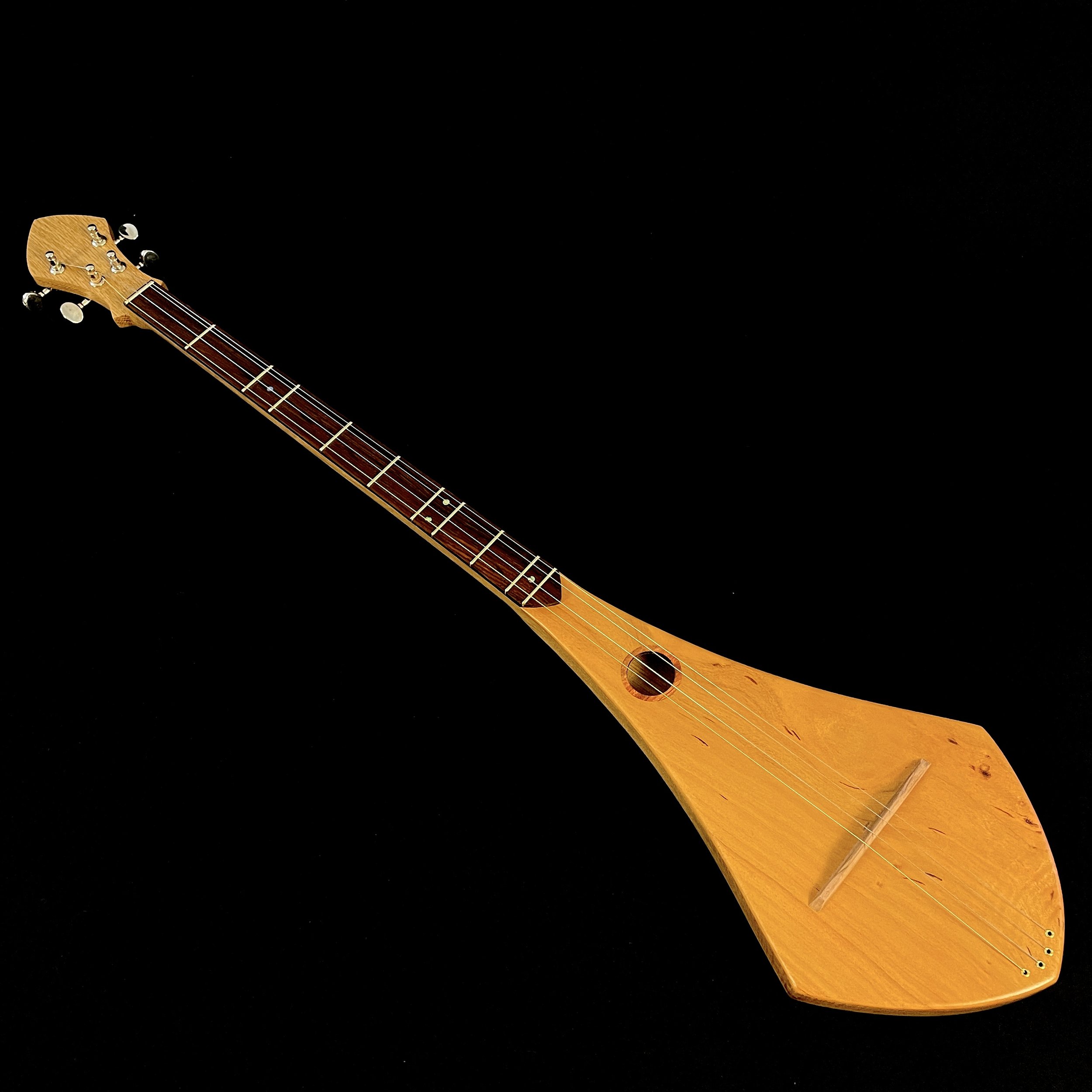
What is a Wild Sparrow lute dulcimer?
A Wild Sparrow dulcimer is a mountain dulcimer that you hold like a lute or guitar, upright in your arms. Its play style is the same as the mountain dulcimer but the strings have been flipped around so they run low to high like other stringed instruments. It is a remarkably easy instrument to learn.
Royal series on the work bench for fret cutting
Who makes Wild Sparrow’s lute dulcimers and Where?
Wild Sparrow dulcimers are made lovingly by hand by me, JT Turner, out of my home workshop in Asheville, North Carolina, USA. I have been playing and working on this type of instrument for over 10 years. These are all original designs but with a continued history of those who instructed me.
From plain boards to finished instruments every piece of wood is cut using hand or power tools. Nothing against computerized machines but it just feels good to make it this way.
On occasion I also collaborate with my wife Emily in her skill with fine cuts using a jeweler’s handsaw and her metal working talent.
chromatic Troubadour series on the bench for sanding

Why do you call them “lute dulcimers”?
Many people think of a lute as a specific historical European string instrument but a lute is also the name for the category of string instruments that are generally plucked with a neck and hollow body. Guitar, banjo, mandolin, and ukulele are all types of lutes. The type of instrument that the fretboard and tuning is modeled after is the mountain dulcimer (which originally borrowed its name from the hammered dulcimer). The mountain dulcimer is in the zither family but when it is built to hold like a guitar it enters the lute family!
Other makers have come up with general and trademarked names for this type of instrument some being “dulcijo”, “stick dulcimers”, and “dulcitar” but these are, in my opinion, uninspired. “Lute dulcimer” hopes to invoke a romantic feeling of the European Renaissance while being true to the heart and history of mountain dulcimer.
neck shaping
Where is the lute dulcimer from?
Folks like myself have been making lute style dulcimer for the last half a century (perhaps further back than that). Though, as mentioned above, it is modeled after the mountain dulcimer so it’s history can be traced back further. The mountain dulcimer is folk instrument that’s been played in the US since the 1800’s. It was typically found in, my home region, the Appalachian Mountains and played in Scots-Irish and German communities but later spread across the country although today is still relatively uncommon.
While many people were taught that the mountain dulcimer, also affectionately called the Appalachian dulcimer, originated in the Appalachian mountains of the US it was most likely brought over by Germanic and Scandinavian immigrants that settled in the mountains. It’s fretboard, tuning, play and string style resembles that of the German scheitholt, Norwiegian langeleik, Icelandic langspil, Swedish hummel, and French epinette des vosges. Instruments, like the people who played them, have always traveled.
clamping soundboard glue up

Where is the wood sourced?
Wild Sparrow lute dulcimers are made of many different species of wood for their unique sounds and styles. The North American woods such as maple and oak are bought from local lumber suppliers in Asheville NC. Some of the wood used is generously given to me by my father in-law, a native Vermonter. For the exotic species, they are purchased from and sourced by the nearby business of Cormark International. They have a mission to sustainability and reforestation.
It is my commitment to ethically source all of the lumber used in the construction of my lutes. Wild Sparrow instruments will never be made by any embargoed wood such as Brazilian Rosewood.
cutting wide boards for necks with chop saw and handsaw
What makes them different than similar instruments?
Hand-built - A close attention to design in terms of both function and form
Inspired by a romance of music, history, and fantasyFretboards - Frets are not cut into the neck but are raised higher
This produces more volume and give you more musical rangeHand cut sound hole inserts - You’ll notice the lack of black boarder/burn marks in the cuts
Reinforced circular sound holes of alternate wood accentsOne of a kind - There are no predetermined woods or depths for my various styles
Extras are not kept in stock though I’m happy to reproduce former models if possible
However no two will be built using the exact same wood combinations and design to keep each unique
teaching a friend how to fret







